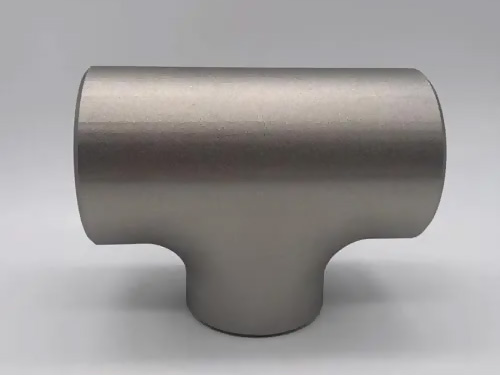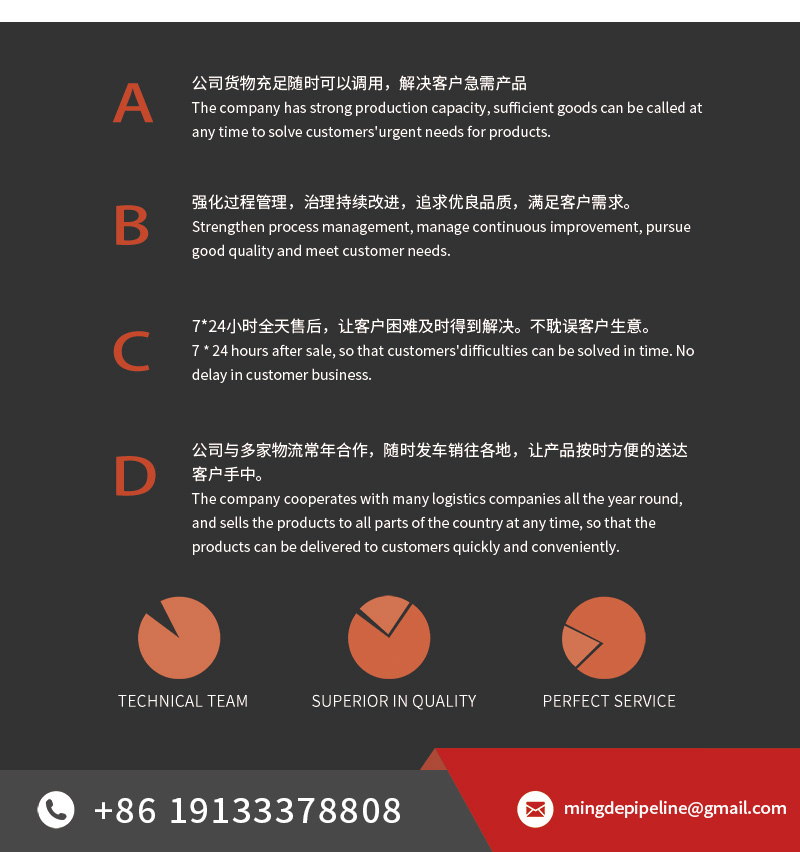
Stainless steel tee

A stainless steel tee is a crucial pipe fitting designed to create a branch or junction in a pipeline, allowing fluid or gas to be divided or combined at a 90-degree angle. Shaped like the letter “T,” it has three openings—two in line and one perpendicular—making it essential in fluid transport systems across various industries.
Manufactured from high-quality stainless steel, these tees offer excellent corrosion resistance, strength, and durability, making them ideal for demanding environments where hygiene, longevity, and safety are paramount. Stainless steel tees are widely used in sectors such as food and beverage, pharmaceuticals, chemical processing, water treatment, oil and gas, and many more.
Design and Structure
The stainless steel tee features a robust construction that ensures consistent flow and mechanical integrity. Available in both equal and reducing configurations, it provides flexibility for various pipeline layouts:
Equal Tee: All three outlets are the same size, providing even flow distribution.
Reducing Tee: The branch outlet is smaller than the main run, allowing for flow control and pipe size transition.
Seamless or welded manufacturing techniques are applied to produce tees that meet strict quality standards. The smooth surface finish and precise dimensions ensure minimal turbulence, pressure loss, and easy maintenance.
Advantages of Stainless Steel Tees
Superior Corrosion Resistance
Stainless steel’s inherent ability to resist rust and chemical attack makes these tees ideal for harsh or corrosive environments, including acids, alkalis, and saline solutions.
Hygienic and Sanitary
The smooth internal surfaces prevent bacterial growth and contamination, which is essential in food processing, pharmaceuticals, and potable water systems.
Strength and Durability
Stainless steel provides excellent mechanical properties, enabling tees to withstand high pressures, temperatures, and mechanical stresses without deformation.
Temperature Resistance
Suitable for both high-temperature steam and cryogenic applications, stainless steel tees maintain integrity across wide temperature ranges.
Low Maintenance
Resistant to scaling, pitting, and abrasion, these fittings require less frequent inspection and replacement, reducing operational costs.
Versatility
Available in a variety of grades (such as 304, 316, 316L), sizes, and connection types (butt-weld, socket weld, threaded), stainless steel tees can be tailored to specific system requirements.
Applications
Food and Beverage Industry
Stainless steel tees meet strict sanitary standards, allowing safe and clean transport of liquids like milk, juices, beer, and other beverages.
Pharmaceutical and Biotechnology
Their sanitary design supports sterile conditions necessary for medicines and biological fluids.
Chemical Processing
Resistant to corrosive chemicals and high temperatures, stainless steel tees help safely manage the flow of acids, solvents, and other aggressive media.
Water Treatment and Supply
Used in potable water systems, desalination plants, and wastewater treatment, stainless steel tees ensure clean and safe water transport.
Oil and Gas
Stainless steel tees are used in pipelines carrying corrosive fluids, offshore platforms, and refineries, where durability under harsh conditions is critical.
Power Generation
Employed in steam lines, cooling water systems, and fuel pipelines, providing long service life under challenging conditions.
Material Grades
The most common stainless steel grades for tees include:
304 Stainless Steel
Offers excellent corrosion resistance in mild environments and is widely used in food processing and general industrial applications.
316 Stainless Steel
Provides enhanced corrosion resistance, especially against chlorides and marine environments, making it suitable for chemical processing and offshore use.
316L Stainless Steel
A low-carbon version of 316, often used where welding is required to avoid sensitization and maintain corrosion resistance.
Choosing the right grade depends on the fluid handled, temperature, pressure, and environmental factors.
Conclusion
The stainless steel tee is a high-performance pipe fitting that combines functionality with exceptional material properties. Its resistance to corrosion, strength, and sanitary qualities make it indispensable in modern piping systems across many industries.
Whether for delivering clean water, handling aggressive chemicals, or maintaining sanitary conditions in food and pharmaceuticals, stainless steel tees offer reliability, safety, and longevity. Their versatility in design and material options ensures they can meet a wide range of application needs, supporting efficient and durable pipeline infrastructure.

 NEWS
NEWS
-
Lightweight Pipe Insulation Bracket Materials and Manufacturing Technology
2025-10-18 09:18:46
-
Industrial Safety Applications of Fire-Resistant Pipe Insulation Brackets
2025-10-17 09:06:27
-
Selection Guide for Insulation Brackets in High-Temperature Steam Pipelines
2025-10-15 09:30:05
-
Pipe Insulation Bracket Design and Safety Requirements for Petrochemical Plants
2025-10-14 07:34:37
 Contact us
Contact us
Mobile:+86 19133378808
Email:mingdepipeline@gmail.com
Website:https://www.mingdepipe.com
Address:Zhenggang Industrial Park, Yanshan County Economic Development Zone, Cangzhou City, Hebei Province




